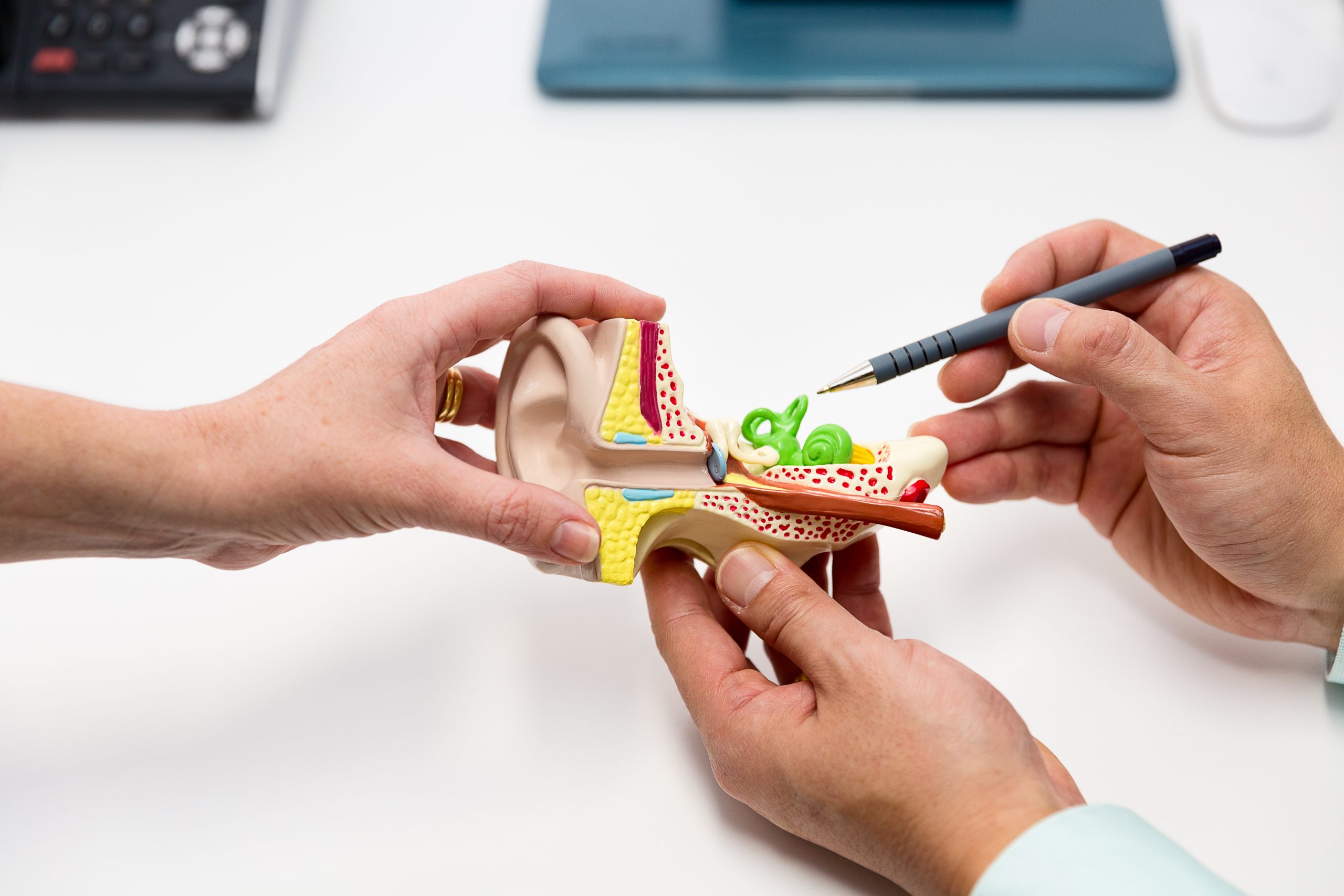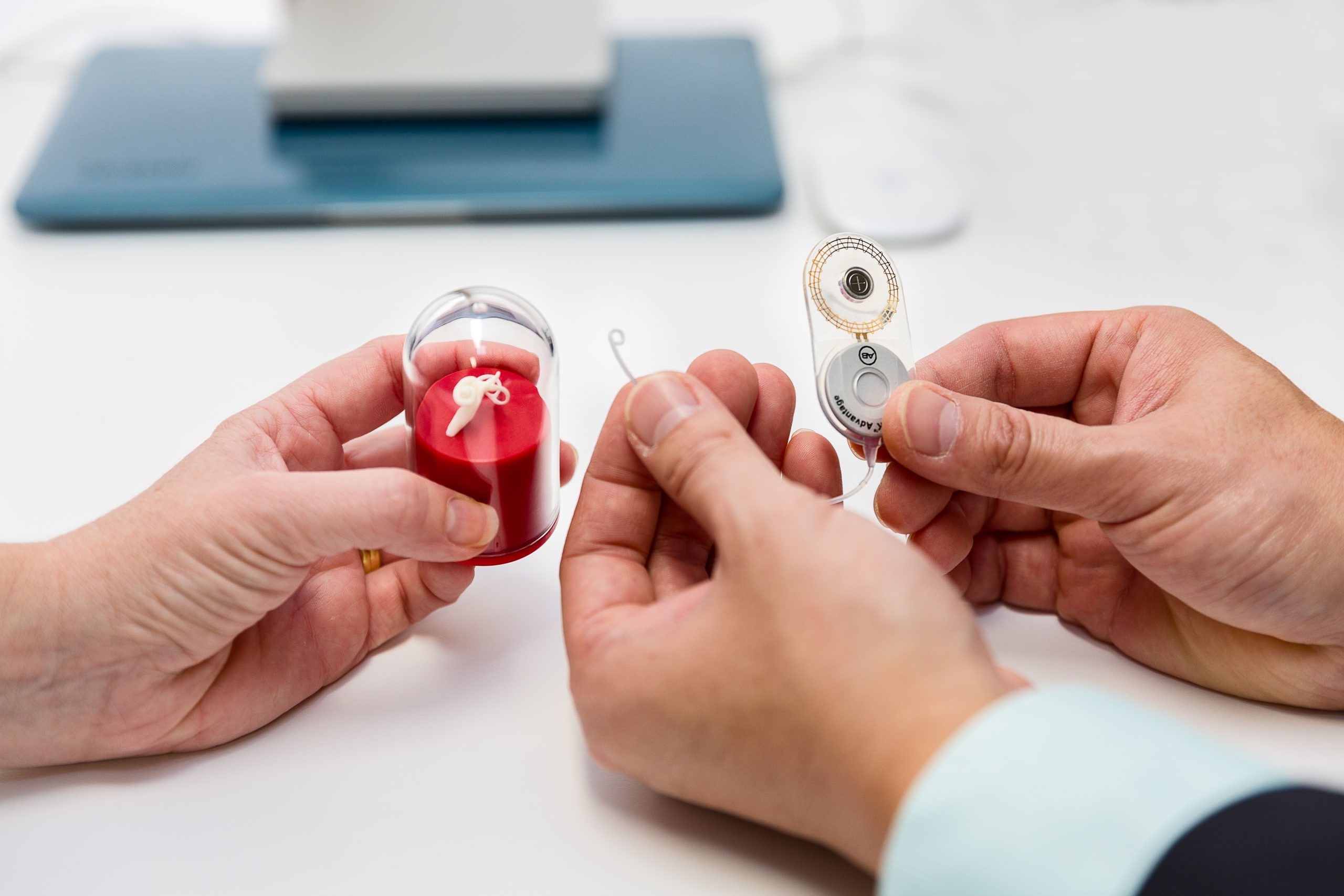
COCHLEAR IMPLANT
The cochlea (also known as the ‘inner ear’) is a part of the ear that sits above the middle ear and its job is to transmit sounds coming into the ear into signals that are sent to the brain via the auditory nerve (also known as the cochlear nerve).
The lower part of the cochlea is connected to the middle ear and is a conical hollow chamber of bone (which looks a little like an elaborate seashell or snail shell – in fact the name comes from the Ancient Greek for snail) divided into three fluid-filled sections.
The section of the cochlea known as the Organ of Corti contains hair cells (called stereocillia) which convert vibrations from the sound into nerve impulses and when these are damaged, hearing loss results.
A cochlear implant is a medical device that takes over the job of these hair cells and allows the wearer to ‘hear’ sounds again, although this is a little different to normal hearing.
The cochlea can be damaged by trauma (such as a blow to the head or inserting a sharp object into the ear), surgery to the head, including dental or nasal surgery, or by continued exposure to loud noise such as music, machinery or gunfire and explosions.
Cochlear implants are an option for people with ‘moderate to profound’ hearing loss, in one or both ears and whose hearing has not improved with conventional hearing aids.
Cochlear implants work by ‘hearing’ sounds via a special type of microphone (sometimes more than one) and a ‘speech processor”, generally placed on the head behind the ear. A transmitter then sends the digitised signals created by the external processor via induction (i.e. there is no connecting wire) to the internal component of the implant – the receiver – which is connected to an array of electrodes attached to the cochlea itself. These electrodes stimulate the cochlear nerve and a signal is sent to the brain.
The surgical procedure to attach a cochlear implant is carried out under a general anaesthetic and normally takes one to two hours. The procedure involves the surgical insertion and connection of the internal component and the fixing of the external component to the skull.
Post Operative Care
A cochlear implant procedure generally requires a post operative hospital stay of one to two days during which time an x-ray is taken to check that the implant has been positioned correctly. Shortly after surgery the device is tested to make sure it is working properly. Patients need to see Dr Chang a week after surgery for a check up and to remove any stitches. A week after this the device is switched on and then ‘tuned’ at a series of around seven visits to the audiologist over approximately a month. This process ensures that the implant is providing the best signal and the most hearing benefit.
Cochlear implants are designed to last for many years. Very rarely an infection may develop of the internal component which will then require replacement. People with a cochlear implant can conduct life normally, although an implant may also need to be removed where the wearer needs to undergo an MRI scan (although some of the less powerful MRI scanning machines can still be used without removing the implant).



 07 3345 1232
07 3345 1232